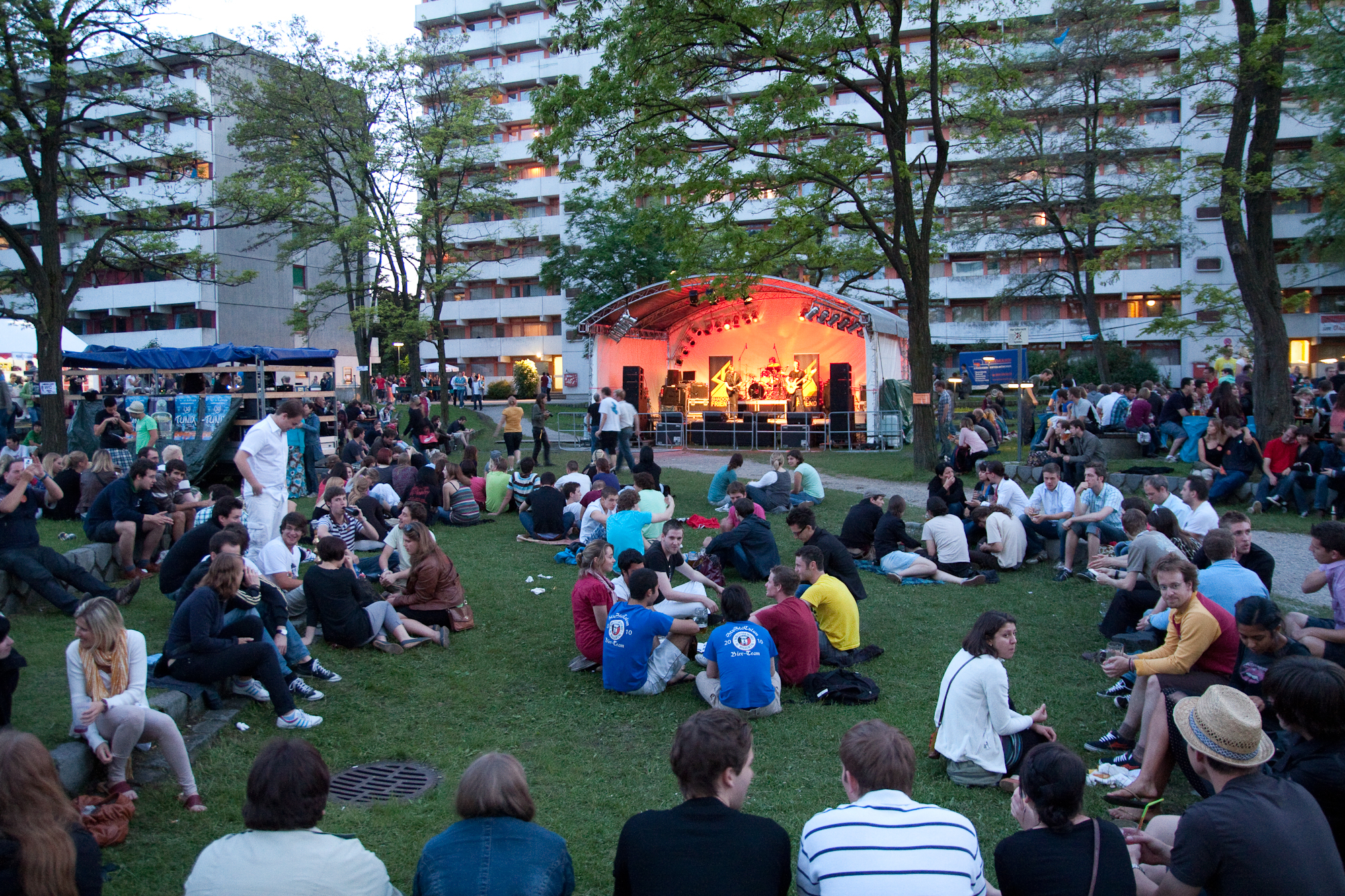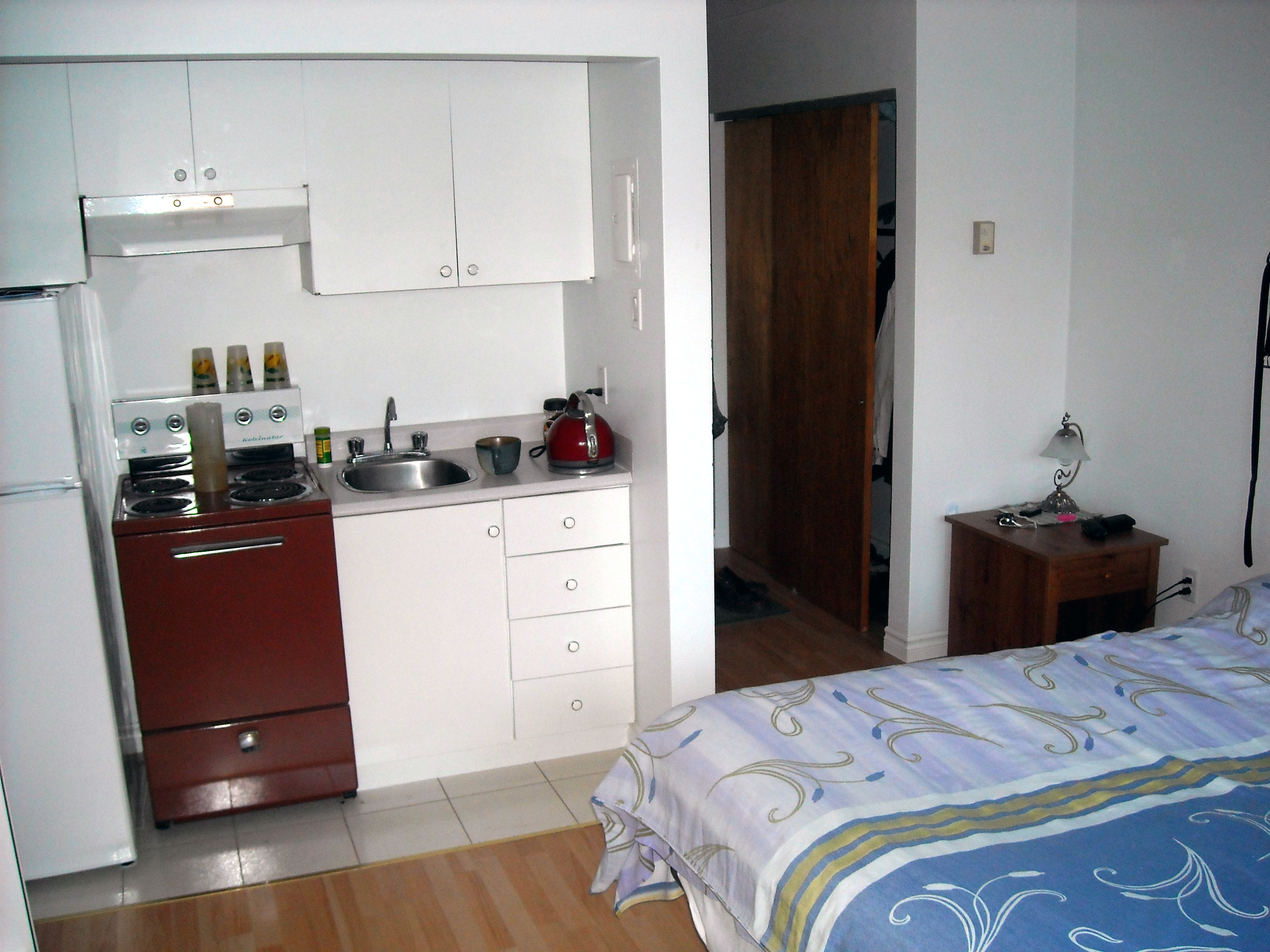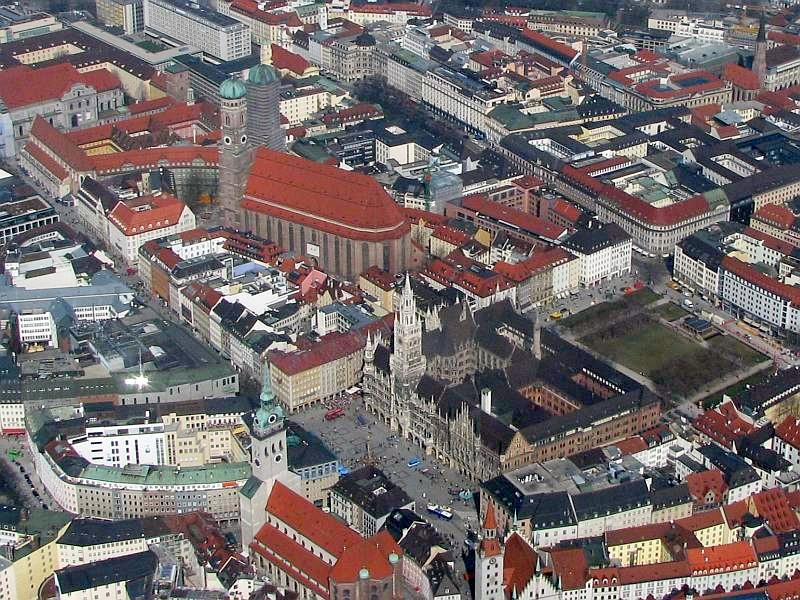|
Studentenstadt Freimann
Studentenstadt Freimann is a student housing complex in Munich, Germany. The complex was built in two stages, between 1961-1968 and between 1970-1977, and is Germany's largest student housing complex with 2,478 residential units in 14 buildings. Next to the Olympic Village, it is the second largest complex of the Studentenwerk München. In order to create affordable housing relatively quickly, several "Wohncontainer" (similar to mobile homes) have been set up near the original buildings. Today, more than 2,500 people live in "StuSta". The streets that run through Studentenstadt are named after the World War II era resistance group, the White Rose. For example, they are named Willi-Graf-Straße, Hans-Leipelt-Straße, and Christoph-Probst-Straße. Location Studentenstadt is located in northern Munich (Freimann) between the Autobahn A9 and the northern part of the Englischer Garten in the neighborhood of Schwabing. The nearest U-Bahn stop, Studentenstadt, is served by the U6. A n ... [...More Info...] [...Related Items...] OR: [Wikipedia] [Google] [Baidu] |
Schwabing
Schwabing is a borough in the northern part of Munich, the capital of the German state of Bavaria. It is part of the city borough 4 (Schwabing-West) and the city borough 12 (Schwabing-Freimann). The population of Schwabing is estimated about 100.000, making it one of the largest districts of Munich. The main boulevard is Leopoldstraße. Overview Schwabing was a village, with a church documented in the 14th century. Schwabing used to be famous as Munich's bohemian quarter, but has lost much of this reputation due to strong gentrification in the last decades. A popular location is the ''Englischer Garten'', or English Garden, one of the world's largest public parks. Other not so commonly known parks in Schwabing are Leopoldpark, Petuelpark and Biotop am Ackermannbogen. The main buildings of Munich's largest universities, Ludwigs-Maximilians-Universität and the Technical University of Munich and Academy of Fine Arts are situated in the nearby Maxvorstadt. A student housing ... [...More Info...] [...Related Items...] OR: [Wikipedia] [Google] [Baidu] |
Munich U-Bahn
The Munich U-Bahn (german: U-Bahn München) is an electric rail rapid transit network in Munich, Germany. The system began operation in 1971, and is operated by the municipally owned Münchner Verkehrsgesellschaft (MVG; Munich Transport Company). The network is integrated into the Münchner Verkehrs- und Tarifverbund (MVV; Munich Transport and Tariff Association) and interconnected with the Munich S-Bahn. The U-Bahn currently comprises eight lines, serving 96 stations (100 stations if four interchange stations with separate levels for different lines are counted twice), and encompassing of routes. Current routes There are eight lines: The network has of active route, and 100 stations. In 2014, 390 million passengers rode the U-Bahn. The trains operate at speeds up to , which is the top speed among German U-Bahns. There is no continuous operation during the night (break from 1 to 4 am, 2 to 4 am on weekends) except on special occasions such as New Year's Eve. Currently, ... [...More Info...] [...Related Items...] OR: [Wikipedia] [Google] [Baidu] |
StuStaCulum
StuStaCulum is a theatre festival at the Studentenstadt in Munich, Germany Germany,, officially the Federal Republic of Germany, is a country in Central Europe. It is the second most populous country in Europe after Russia, and the most populous member state of the European Union. Germany is situated betwe .... Theatre festivals in Germany Festivals in Munich {{Germany-festival-stub ... [...More Info...] [...Related Items...] OR: [Wikipedia] [Google] [Baidu] |
StuSta München
The SV Studentenstadt Freimann is a German rugby union club from Munich, currently playing in the 2nd Rugby-Bundesliga. It is based in the ''Studentenstadt'' in Munich, the ''student city''. The club is part of a larger student club, the ''SportVerein der Studentenstadt Freimann e.V'', which offers other sports like association football, tennis and volleyball. Its nickname is StuSta Rugby. History A club largely made up of German and international students, ''StuSta'' took out its first Bavarian rugby union championship in 2002, winning the Regionalliga Bayern, repeating this success in 2004. Following this success, the club earned promotion to the 2nd Rugby-Bundesliga South/West in 2004, the second tier of German rugby. After struggling against relegation for the first three seasons there, the team has established itself as a mid-table side. In this league, it competes with local rival München RFC, a former Rugby-Bundesliga club. It took ''StuSta'' until May 2008 however, to w ... [...More Info...] [...Related Items...] OR: [Wikipedia] [Google] [Baidu] |
Rugby Union
Rugby union, commonly known simply as rugby, is a close-contact team sport that originated at Rugby School in the first half of the 19th century. One of the two codes of rugby football, it is based on running with the ball in hand. In its most common form, a game is played between two teams of 15 players each, using an oval-shaped ball on a rectangular field called a pitch. The field has H-shaped goalposts at both ends. Rugby union is a popular sport around the world, played by people of all genders, ages and sizes. In 2014, there were more than 6 million people playing worldwide, of whom 2.36 million were registered players. World Rugby, previously called the International Rugby Football Board (IRFB) and the International Rugby Board (IRB), has been the governing body for rugby union since 1886, and currently has 101 countries as full members and 18 associate members. In 1845, the first laws were written by students attending Rugby School; other significant even ... [...More Info...] [...Related Items...] OR: [Wikipedia] [Google] [Baidu] |
Kitchenette
A kitchenette is a small cooking area, which usually has a refrigerator and a microwave, but may have other appliances. In some motel and hotel rooms, small apartments, college dormitories, or office buildings, a kitchenette consists of a small refrigerator, a microwave oven, and sometimes a sink. New York City building code defines a kitchenette as a kitchen of less than 7.4 m2 (80 ft2) of floor space. In hotels and motels Kitchenettes are a common feature in hotel and motel guest rooms and often contain a coffeemaker, a bar refrigerator, commonly called a mini-bar. Some hotel kitchenettes have provisioned refrigerators that have an interior sensor feature used by management to monitor guest use of the refrigerator's contents and thus charge for the consumables, which typically include soda, beer, and liquor. In Britain In British English, the term kitchenette also refers to a small secondary kitchen in a house. Often it is found on the same floor as the children's bedrooms, ... [...More Info...] [...Related Items...] OR: [Wikipedia] [Google] [Baidu] |
Altstadt (München)
The Munich Old Town is part of the Bavarian capital Munich and has belonged to the city the longest, even if some places which are meanwhile districts of Munich, were mentioned long before Munich's documents spoke of the Old Town. The Old Town forms together with the district ''Lehel'', the municipality No. 1 ''Altstadt-Lehel''. The entire area of the Old Town is listed as both a historical ensemble as well as a historical monument listed in the Bavarian historical monument list. Location Munich's old town district essentially corresponds to the area of Munich's historic city center, the area that was surrounded by Munich's city fortifications since the Middle Ages to the end of the 18th century. It is located on two plateau levels of the Munich gravel plain, the ''Hirschauterrasse'', which formed the original floodbed of the Isar, and Old Town plateau located only a few meters higher on which the original city was founded. The sloping edge runs along the west side of ''Oberang ... [...More Info...] [...Related Items...] OR: [Wikipedia] [Google] [Baidu] |
Ludwig-Maximilians-Universität
The Ludwig Maximilian University of Munich (simply University of Munich or LMU; german: Ludwig-Maximilians-Universität München) is a public research university in Munich, Germany. It is Germany's sixth-oldest university in continuous operation. Originally established in Ingolstadt in 1472 by Duke Ludwig IX of Bavaria-Landshut, the university was moved in 1800 to Landshut by King Maximilian I of Bavaria when the city was threatened by the French, before being relocated to its present-day location in Munich in 1826 by King Ludwig I of Bavaria. In 1802, the university was officially named Ludwig-Maximilians-Universität by King Maximilian I of Bavaria in honor of himself and Ludwig IX. LMU is currently the second-largest university in Germany in terms of student population; in the 2018/19 winter semester, the university had a total of 51,606 matriculated students. Of these, 9,424 were freshmen while international students totalled 8,875 or approximately 17% of the student popu ... [...More Info...] [...Related Items...] OR: [Wikipedia] [Google] [Baidu] |
Studentenstadt (Munich U-Bahn)
Studentenstadt is a Munich U-Bahn station in the borough of Schwabing-Freimann Schwabing is a borough in the northern part of Munich, the capital of the German state of Bavaria. It is part of the city borough 4 (Schwabing-West) and the city borough 12 (Schwabing-Freimann). The population of Schwabing is estimated about 100 .... It services the Studentenstadt that provides accommodation for university students. References External links Munich U-Bahn stations located above ground Railway stations in Germany opened in 1971 1971 establishments in West Germany {{Munich-U-Bahn-stub ... [...More Info...] [...Related Items...] OR: [Wikipedia] [Google] [Baidu] |
U-Bahn
Rapid transit in Germany consists of four U-Bahn systems and fourteen S-Bahn systems. The U-Bahn commonly understood to stand for Untergrundbahn (''underground railway'') are conventional rapid transit systems that run mostly underground, while the S-Bahn or Stadtschnellbahn (''city rapid railway'') are commuter rail services, that may run underground in the city center and have metro-like characteristics in Munich, Hamburg and Berlin which they only have to a lesser extent in other cities. There are also over a dozen premetro or Stadtbahn systems that are rapid transit in the city center and light rail outside. There are four U-Bahn systems, namely in Berlin, Hamburg, Munich and Nuremberg; these are all run by the transit authorities in the city. Some cities call their Stadtbahn "U-Bahn" (like Frankfurt) or abbreviate their Stadtbahn with a U. The confusing term "U-Stadtbahn" is also used on occasion and as "U-Bahn" is often seen as the more desirable term, common parlance and ... [...More Info...] [...Related Items...] OR: [Wikipedia] [Google] [Baidu] |
Englischer Garten
The ''Englischer Garten'' (, ''English Garden'') is a large public park in the centre of Munich, Bavaria, stretching from the city centre to the northeastern city limits. It was created in 1789 by Sir Benjamin Thompson (1753–1814), later Count Rumford (''Reichsgraf von Rumford''), for Prince Charles Theodore, Elector of Bavaria. Thompson's successors, Reinhard von Werneck (1757–1842) and Friedrich Ludwig von Sckell (1750–1823), advisers on the project from its beginning, both extended and improved the park. With an area of (370 ha or 910 acres), the ''Englischer Garten'' is one of the world's largest urban public parks. The name refers to its English garden form of informal landscape, a style popular in England from the mid-18th century to the early 19th century and particularly associated with Capability Brown. History Creation When the Elector of Bavaria Maximilian III Joseph, the last ruler from the Bavarian branch of the Wittelsbach dynasty, died childless in 17 ... [...More Info...] [...Related Items...] OR: [Wikipedia] [Google] [Baidu] |






